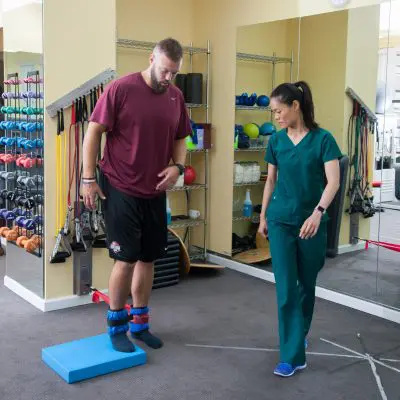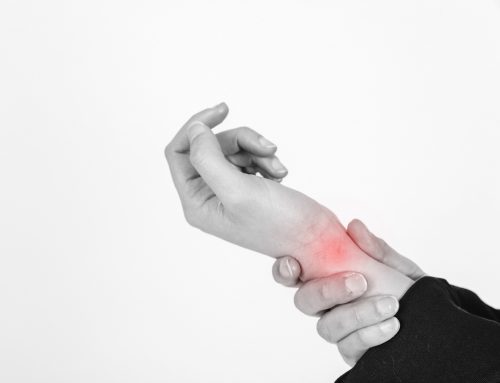
The thing is… in both college and professional football, the rest of the people are usually giants like Auffray. Over the decades, the weight and size of the average football player has grown tremendously. There are defensive players now who are the same size as the offensive linemen of the 1980s or earlier. That means that these people are all crashing into each other at high speeds… which increases the risk for injury.
It’s not just game day situations. These teams practice during the week and there has to be some contact drills… which also open the door for injuries or just an overall sense of pain and discomfort. These football players have accepted it as part of their contract to be able to play something that they love and that they excel at. Many don’t think about what lies ahead in their 40s and beyond. There is something that can help them though.
Physical Therapy
When it comes to managing these injuries, or in some of these players’ cases, their post-surgical recoveries, physical therapy is a huge help. It’s done in both college and professional football. Yes, everyday workouts with weights and doing cardio work like running can help build up their bodies to sustain the impacts, but working with a physical therapist can bring their treatments to a whole different level.
If you look at the photos and videos of Auffray on the site, he’s doing a variety of things with different equipment. The one where he’s laying on his back and holding the handles on the padded things on his shoulder? That’s a spinal decompression machine that can be calibrated to help one’s spine get back into proper alignment. That’s important in terms of easing the pain one has from a bulging disc in the back, pain management, and helping with nerve issues like sciatica.
What kind of things occurred when Auffray came to the Empire offices. “The sessions were very hands-on and thorough,” he recalled. “We used all different equipment and exercises based on the plan for the day. Each visit was different based on my progress.”
Injuries and Treatments
The thing about football is that there are a variety of injuries that can happen on the field. A player can hurt his ankle or knee when he changes direction quickly, with his body trying to go one way and his feet going another. There is also the very real risk of a very large man landing on his leg while he is wrapped up in a tackle and his body is in an awkward position. There are always the possibility of an anterior cruciate ligament tear. That always means physical therapy rehab after surgery.
Not all the injuries occur on the field, though. In order to try to stay strong, players often lift very heavy amounts of weight…. which can result in some muscles tearing. So they wind up working with a physical therapist to handle both ligament and tissue injuries. Many times they will try this as an alternative to surgery. It’s only if the injury is really severe that they have to go to the operating room.
Post Career
This is where the players most often pay the steepest toll. As they get on in years, their bodies often rebel against them. That means that the joints that moved so fluidly when they were in college and in their early years in the NFL now feel like they are grinding against each other. Physical therapy can greatly help them manage whatever pain and discomfort they are feeling and can even give them some mobility back.
Auffray, who spent time with four teams in the pros, is not in the NFL anymore. Instead, he’s pursuing something else that is close to his heart: player safety for those who play contact sports. He’s the Vice President of Sales & Marketing at a company called Gamebreaker. They make soft-shell headgear for people who play rugby, soccer, water polo, cheerleading (they do some REALLY dangerous moves sometime), and yes… football. They are based in both California and Texas.
When it comes to his time with Dr. Moalemi and the others at Empire, Auffray has nothing but good memories. “They helped me recover faster from injury, and still to this day I am in little to no pain even 5 years after my career.” He heartily recommended it to any athlete who was looking to manage their own pain. If you are someone who needs help regulating your own pain or discomfort, you can reap the benefits.
He has some simple advice for athletes: “Take care of your body. It’s the only one you got!” Doing physical therapy can go a long way toward helping them keep their body at its peak condition or help them recover it. Dr. Moalemi and his staff at Empire Physical Medicine and Pain Management have helped both athletes and people from all walks of everyday life manage their painful conditions, whether through spinal decompression or other ways.
The main goal is for them to be able to enjoy an active lifestyle. You can visit them at either their Midtown Manhattan or Wall Street location – call 646-665-7109 today to make an appointment!
Published By:
Empire Physical Medicine & Pain Management
7 W 45th St floor 9,
New York, NY 10036
Phone: (646) 665-7109
Website: https://manhattanpainrelief.com





